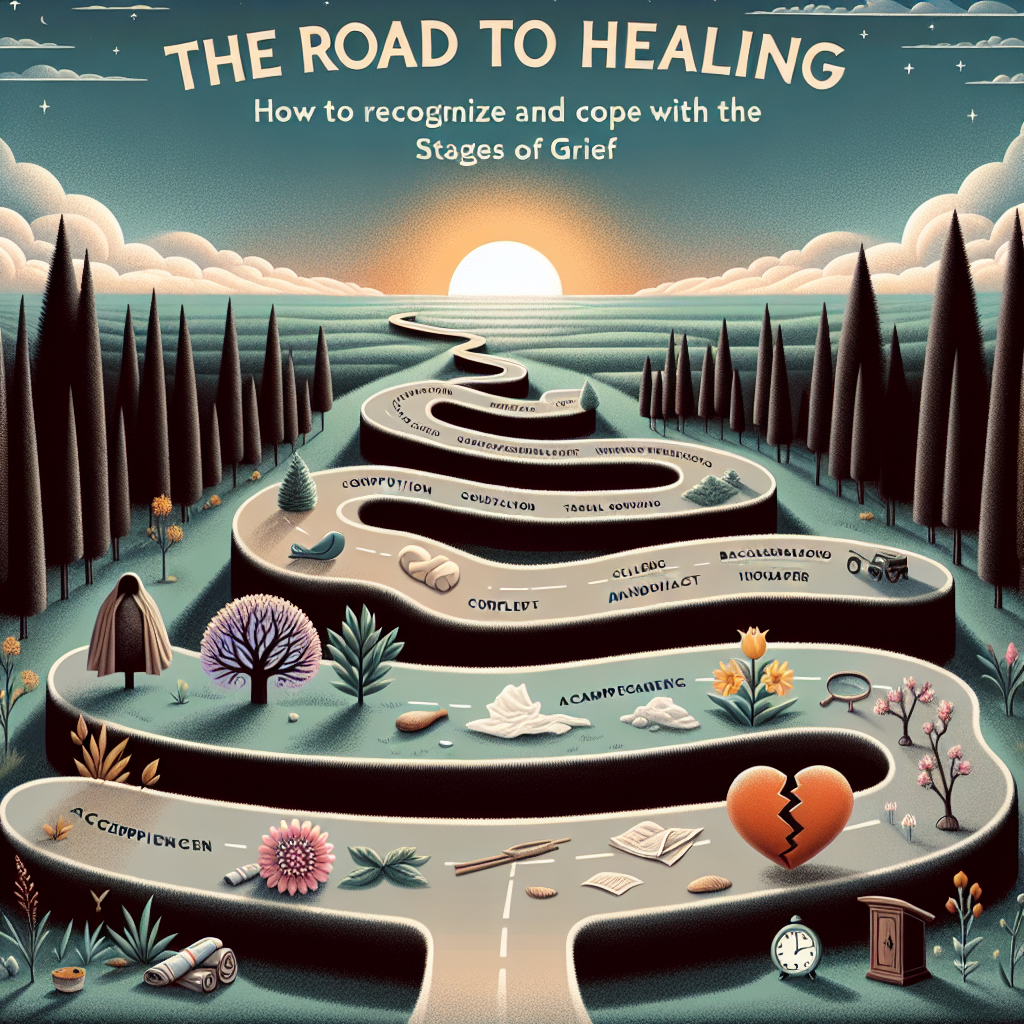
The Ultimate Guide to Healing: How to Recognize and Cope with the Stages of Grief
Introduction
Grief is a universal human experience, one that touches everyone at some point. Whether caused by death, the end of a relationship, or significant life changes, grief brings a tidal wave of emotions that can feel overwhelming. If you are currently navigating through loss, you’re not alone, and the journey can lead to healing. In this article, The Road to Healing: How to Recognize and Cope with the Stages of Grief, we’ll explore the intricate nature of grief, breakdown the various stages, unveil effective coping mechanisms, and share impactful case studies that demonstrate the healing process.
Understanding Grief: A Multifaceted Emotion
Grief is often misunderstood, as it manifests differently based on individual personalities and circumstances. Some may experience emotional grief, characterized primarily by feelings of sadness or despair, while others might experience physical symptoms such as fatigue or illness. Grief can feel like a fog that obscures clarity and joy, making the journey seem endless.
The Road to Healing: Recognizing the Stages of Grief
A widely accepted framework for understanding the emotional journey of grief was developed by Elisabeth Kübler-Ross, outlining five primary stages: denial, anger, bargaining, depression, and acceptance. This model serves as a compass on The Road to Healing: How to Recognize and Cope with the Stages of Grief.
Stage 1: Denial
Denial acts as a buffer, allowing individuals to process profound shock. It might feel surreal, as if the loss hasn’t occurred. This stage is essential, as it facilitates the gradual absorption of reality.
Case Study: Sarah, a 45-year-old woman, lost her husband unexpectedly. For weeks, she went about her daily routines, convinced he was merely away on a trip. This denial protected her from the full impact of her loss, giving her the necessary space to process her emotions.
Stage 2: Anger
Eventually, the denial begins to fade, often giving way to anger. This might manifest as frustration directed toward loved ones, the deceased, oneself, or even a higher power.
Case Study: After the passing of her father, Mia felt a deep sense of anger towards him for leaving her. This anger began taking a toll on her relationships, and eventually, she learned to channel it into something constructive, volunteering in his memory.
Stage 3: Bargaining
Desperate to reverse the loss, individuals may plead with themselves or a higher power for the chance to undo their grief. This phase may involve irrational thoughts, such as "If only I had done this differently."
Case Study: Mark often found himself thinking, "If I had only called her that night, she wouldn’t be gone." This reflective bargaining became a focal point for Mark’s healing, eventually leading him to focus on positive actions he could take in the future to honor her memory.
Stage 4: Depression
As the reality of the loss sets in, deep sadness and depression often follow. This stage can feel overwhelming; once the denial and anger have subsided, the individual must confront the ache of their loss.
Case Study: Anna fell into a deep depression after her sister’s death. She found solace in therapy, where she learned to express her feelings healthily. This stage ultimately helped her realize that it was acceptable to feel sad and that seeking help was a strength.
Stage 5: Acceptance
Acceptance does not mean that the loss is forgotten or that the pain has completely disappeared. Instead, individuals come to terms with their loss and begin to find ways to adjust to life without their loved one.
Case Study: After years of grief, David began a support group that focused on childhood loss. By sharing his journey and encouraging others, he transformed his grief into a meaningful mission.
Coping Strategies on the Road to Healing
Recognizing the stages of grief is crucial, but knowing how to cope with each stage ultimately guides you on The Road to Healing: How to Recognize and Cope with the Stages of Grief. Below are some effective strategies to incorporate:
1. Allow Yourself to Feel
Embrace your emotions without shame or judgment. Cry when you need to, feel anger, and allow yourself to remember joyful moments.
2. Seek Support
Don’t hesitate to reach out for help from friends, family, or professionals. Support groups and therapeutic services can provide unique insights and solace.
3. Establish Rituals
Consider creating rituals that honor your loved one. This might include lighting a candle, writing a letter, or establishing a yearly tradition.
4. Keep a Journal
Writing can be an excellent therapeutic outlet. Documenting thoughts and feelings can lead to a better understanding of your emotions and offer a path toward healing.
5. Practice Mindfulness
Mindfulness and meditation can be valuable tools in helping individuals stay grounded in the present moment, making it easier to cope with overwhelming emotions.
6. Exercise and Nutrition
Physical activity and a balanced diet significantly contribute to emotional well-being. Small steps toward a healthy lifestyle can make a considerable impact.
The Importance of Emotional Intelligence in Grief
Understanding one’s emotional state and being aware of how grief affects both the mind and body enhances The Road to Healing: How to Recognize and Cope with the Stages of Grief. Developing emotional intelligence can help individuals establish connections between their feelings and actions, allowing for a more profound healing experience.
Healing Takes Time: Patience is Key
One of the crucial lessons on The Road to Healing: How to Recognize and Cope with the Stages of Grief is understanding that healing is not linear. Some days may feel more challenging than others, and that’s perfectly normal. Patience is an essential component of the process. Each person’s journey through grief is unique—what works for one may not work for another, and timelines cannot be prescribed.
Conclusion
Grief is undoubtedly one of life’s most challenging experiences, but it serves a profound purpose in the cycle of life. Learning to recognize and cope with the stages of grief is integral to The Road to Healing: How to Recognize and Cope with the Stages of Grief. By understanding the stages and adopting effective coping strategies, you can move toward acceptance and find joy once more. Grief can transform, shape, and ultimately lead to healing—though the road may be complicated, it is navigable.
FAQs Section
Q1: How long does the grieving process last?
Grieving varies greatly from person to person; there’s no set timeframe. It’s important to focus on your individual journey and allow yourself the necessary time to heal.
Q2: Is it normal to feel happiness while grieving?
Yes! Finding moments of happiness, even amidst grief, is entirely normal. It’s crucial to remember that joy and grief can coexist.
Q3: Can I skip stages of grief?
While it’s possible to experience stages out of order or revisit some stages many times, everyone’s journey is unique. Allow yourself to feel as you need to.
Q4: Should I seek professional help during my grieving process?
If grief becomes overwhelming or impacts your daily life, seeking therapy or support groups can be beneficial.
Q5: What role does support from friends and family play?
Social support is critical in the healing process. Friends and family can provide emotional comfort, create meaningful connections, and help individuals navigate the complex emotions of grief.
Through understanding grief and recognizing its stages, you’re taking vital steps along The Road to Healing: How to Recognize and Cope with the Stages of Grief. Embrace your journey and remember that healing is possible; brighter days lie ahead.
















